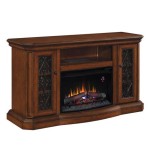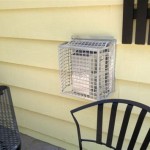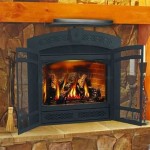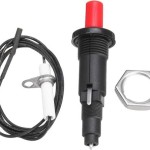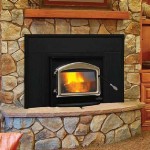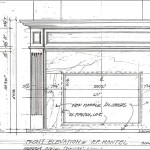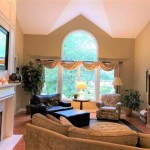Direct Vent Fireplaces: A Comprehensive Review
Direct vent fireplaces have become increasingly popular as a convenient and efficient heating and aesthetic addition to homes. Unlike traditional wood-burning fireplaces, direct vent models offer a sealed combustion system, drawing air from outside the home and venting exhaust directly outdoors through a coaxial or concentric pipe. This eliminates the need for a chimney and significantly improves safety and efficiency. This article will provide a comprehensive overview of direct vent fireplaces, highlighting their key features, benefits, and considerations for potential buyers.
A direct vent fireplace operates on a closed combustion system. This means that the appliance is sealed off from the interior of the house, preventing issues such as backdrafting and potential carbon monoxide leaks. The system pulls fresh air from outside through one section of the vent pipe, and the exhaust gases are expelled through another section of the same pipe. This design ensures efficient and safe operation, making it a preferred alternative to traditional fireplaces, especially in newer, more tightly sealed homes.
Understanding the Key Advantages of Direct Vent Fireplaces
One of the primary advantages of direct vent fireplaces is their efficiency. Due to the closed combustion system, they lose very little heat up the vent. Instead, most of the generated heat is radiated into the room. Many models boast efficiency ratings of 70% or higher, meaning that a significant portion of the fuel is converted into usable heat. This makes them a cost-effective heating option, especially when compared to older, less efficient fireplaces.
Another key advantage is the installation flexibility they offer. Because they do not require a traditional chimney, direct vent fireplaces can be installed in virtually any room of the house. The vent pipe can be run horizontally through an exterior wall or vertically through the roof, depending on the home's architecture and the desired placement of the fireplace. This versatility makes them an attractive option for homeowners who want to add a fireplace to a room that doesn't already have one.
Safety is a paramount concern for homeowners, and direct vent fireplaces excel in this area. The sealed combustion system virtually eliminates the risk of backdrafting, which can introduce dangerous carbon monoxide into the home. Additionally, the glass front of the fireplace remains relatively cool to the touch, reducing the risk of burns, particularly for children and pets. The controlled combustion also results in cleaner burning, minimizing the emission of pollutants into the environment.
Fuel Options and Aesthetic Considerations
Direct vent fireplaces are available in various fuel options, allowing homeowners to choose the one that best suits their needs and preferences. Natural gas and propane are the most common fuel sources. Natural gas is generally more cost-effective if a gas line is already available to the home. Propane, on the other hand, offers more flexibility in terms of location, as it can be stored in a tank and connected to the fireplace as needed.
Beyond fuel options, direct vent fireplaces offer a wide range of aesthetic choices. They come in various styles, from traditional to contemporary, and can be customized with different logs, stones, and glass media. The flame presentation can also be adjusted to create a realistic and visually appealing fire. Many models also feature remote controls, allowing homeowners to easily adjust the flame height, heat output, and even turn the fireplace on and off.
Factors to Consider When Choosing a Direct Vent Fireplace
When selecting a direct vent fireplace, several factors should be carefully considered. The size of the room to be heated is a crucial consideration. The fireplace should be appropriately sized to provide sufficient heat without overheating the space. BTU (British Thermal Units) ratings are used to measure the heat output of a fireplace, and it's essential to choose a model with a BTU rating that is appropriate for the room size. Consulting with a qualified HVAC professional can help determine the right BTU rating for specific needs.
The venting requirements of a direct vent fireplace are also important to understand. The vent pipe must be installed according to the manufacturer's specifications to ensure safe and efficient operation. The length and configuration of the vent pipe can affect the fireplace's performance, so it's crucial to follow the guidelines provided by the manufacturer. Professional installation is typically recommended to ensure that the venting system is properly installed.
The overall cost of a direct vent fireplace, including the unit itself, installation, and ongoing fuel costs, should be factored into the decision-making process. While direct vent fireplaces are generally more expensive than some other types of heating appliances, their efficiency and convenience can make them a worthwhile investment in the long run. Exploring different models and comparing prices from various retailers can help find the best value for the budget.
The maintenance requirements of a direct vent fireplace are relatively minimal. Regular cleaning of the glass front is necessary to maintain a clear view of the flames. It is also recommended to have the fireplace inspected annually by a qualified technician to ensure that all components are functioning properly and that the venting system is free of obstructions. With proper maintenance, a direct vent fireplace can provide years of reliable and enjoyable service.
Safety Standards and Certifications
Direct vent fireplaces are subject to stringent safety standards and certifications to ensure their safe operation. Look for models that are certified by reputable organizations such as UL (Underwriters Laboratories) or CSA (Canadian Standards Association). These certifications indicate that the fireplace has been tested and meets established safety requirements. Also, ensure the fireplace is installed by a qualified technician who is familiar with local building codes and regulations.

Expert Reviews Fireplaces Direct Learning Center

Majestic Echelon Ii Direct Vent Gas Fireplace Review

Superior Drt3500 Series Direct Vent Fireplace 35 40 Or 45 Fireplaces Fmi Gas

Direct Vent Gas Fireplaces The Ultimate Guide Learning Center

Empire Tahoe Direct Vent Premium Fireplace 36 42 Or 48 White Mountain Hearth Fireplaces

White Mountain Hearth Vented Gas Log Set Review Fireplaces Direct Learning Center

Rushmore 40 Inch Truflame Direct Vent Fireplace Fine S Gas

Empire Tahoe Premium 42 Direct Vent Gas Fireplace

Empire Loft Direct Vent Gas Fireplace White Mountain Hearth Fireplaces

Napoleon Bgd90 Dream Direct Vent Gas Fireplace
Related Posts

